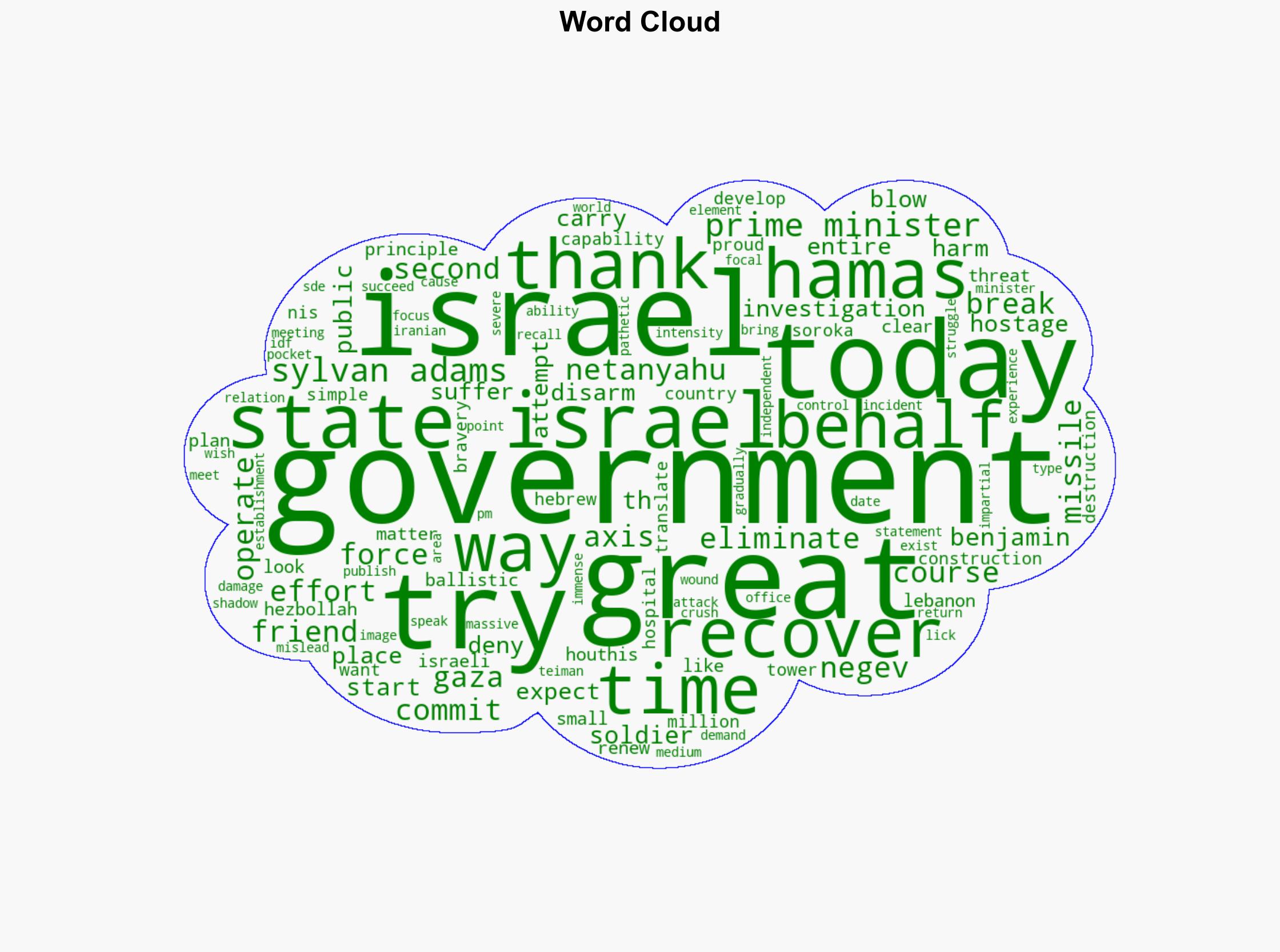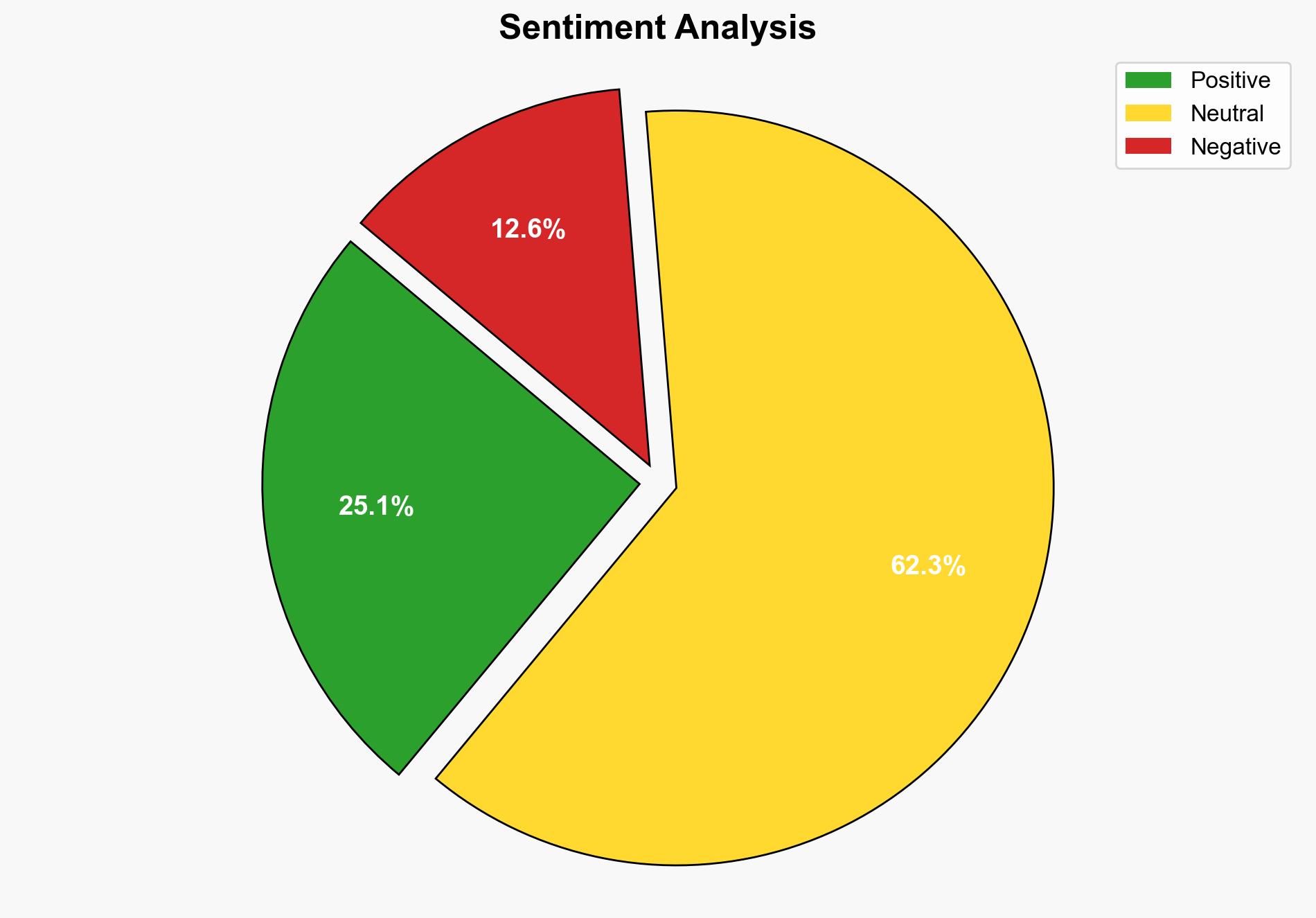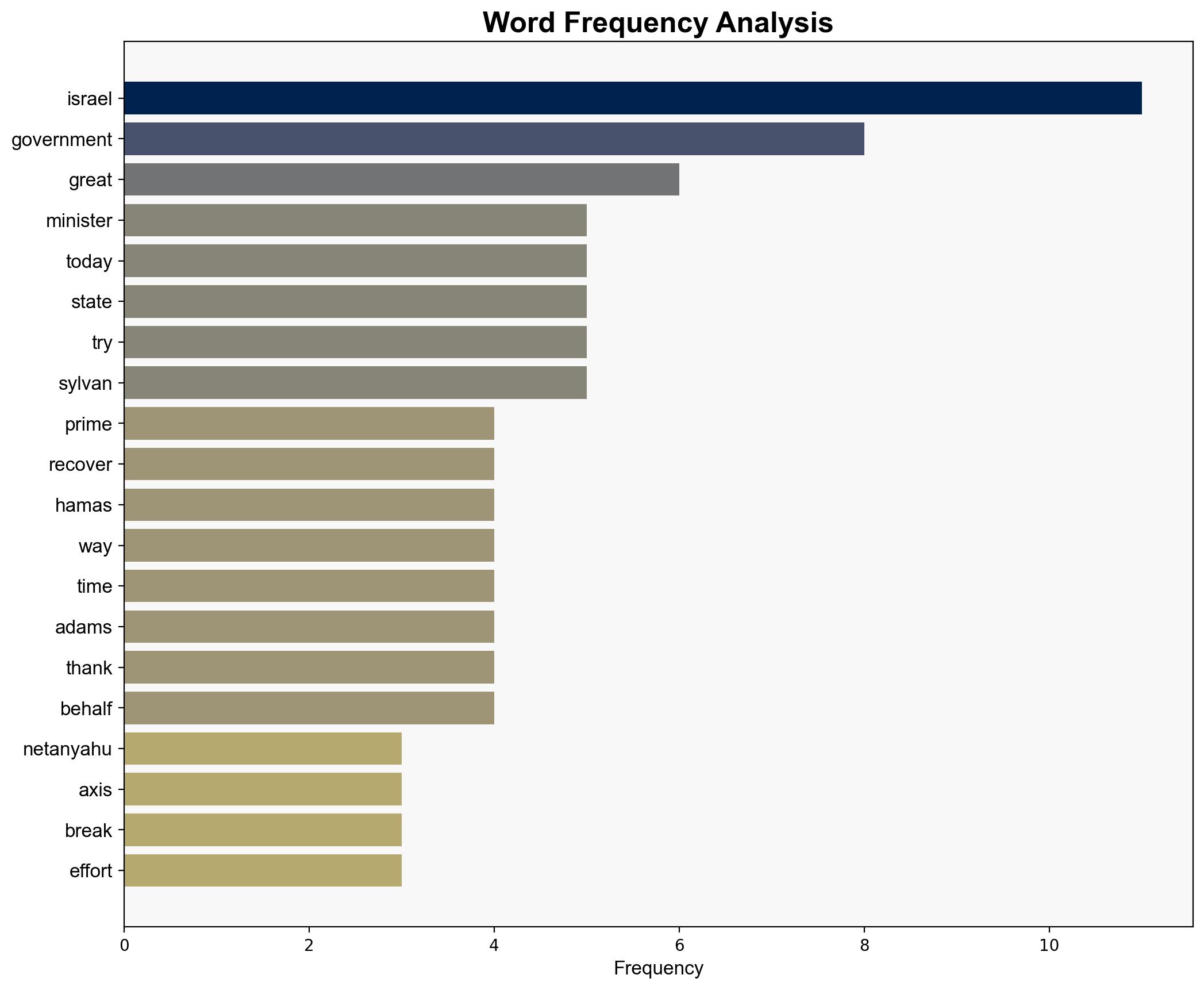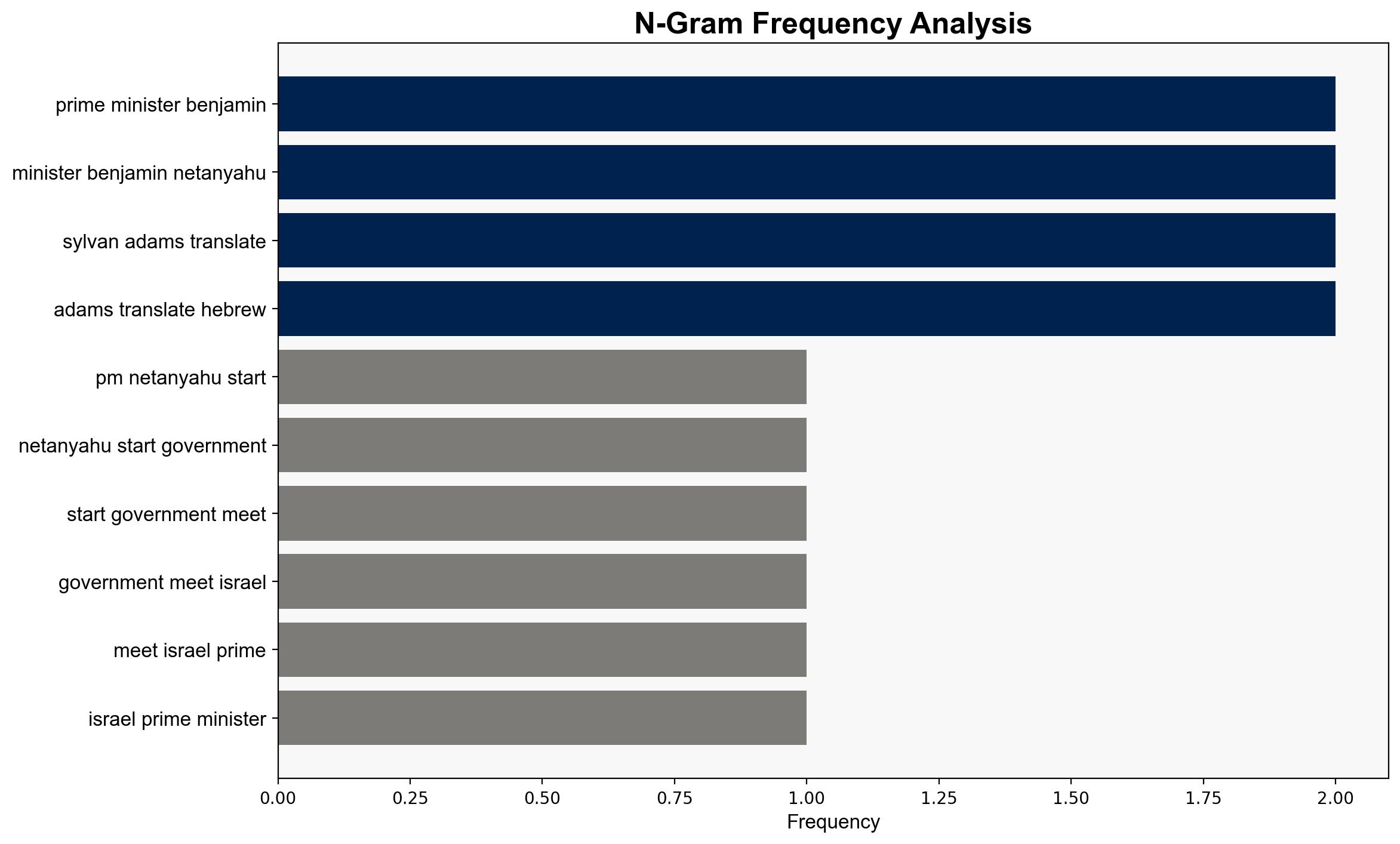PM Netanyahu at the Start of the Government Meeting – Globalsecurity.org
Published on: 2025-11-03
Intelligence Report: PM Netanyahu at the Start of the Government Meeting – Globalsecurity.org
1. BLUF (Bottom Line Up Front)
The strategic judgment suggests that Israel is intensifying its military and diplomatic efforts to counter threats from Hamas and Hezbollah, with a focus on disarmament and demilitarization. The most supported hypothesis is that Israel aims to strengthen its security posture while managing international relations, particularly with the United States. Confidence level: Moderate. Recommended action includes reinforcing diplomatic channels and military readiness to preempt potential escalations.
2. Competing Hypotheses
1. **Hypothesis A**: Israel is primarily focused on neutralizing immediate threats from Hamas and Hezbollah through military action and diplomatic pressure, aiming for long-term regional stability.
2. **Hypothesis B**: Israel’s actions are part of a broader strategy to assert regional dominance and deter Iranian influence, using the current conflict as a pretext for expanding military operations and securing strategic advantages.
Using ACH 2.0, Hypothesis A is better supported by the emphasis on disarmament and specific military actions mentioned in the statement, aligning with Israel’s historical focus on immediate security threats.
3. Key Assumptions and Red Flags
– **Assumptions**: It is assumed that disarmament and demilitarization will lead to long-term stability. Another assumption is that international allies, particularly the U.S., will support Israel’s actions.
– **Red Flags**: Potential overestimation of the effectiveness of military action alone in achieving lasting peace. There is also a risk of misjudging the international community’s response, particularly if civilian casualties increase.
– **Blind Spots**: Limited consideration of the humanitarian impact and the potential for increased radicalization as a result of military actions.
4. Implications and Strategic Risks
– **Patterns**: Continued military engagements could lead to a cycle of retaliation, increasing regional instability.
– **Cascading Threats**: Escalation with Hezbollah could draw in other regional actors, complicating the conflict.
– **Potential Escalation**: Increased military actions may provoke broader conflict, potentially involving Iran directly.
– **Geopolitical Dimensions**: Strained relations with neighboring countries and international bodies could arise if perceived as overly aggressive.
5. Recommendations and Outlook
- Enhance diplomatic efforts with key international players to ensure support and mitigate backlash.
- Increase intelligence sharing and coordination with allies to preempt threats.
- Scenario-based projections:
- **Best Case**: Successful disarmament leads to reduced hostilities and improved regional stability.
- **Worst Case**: Escalation leads to broader regional conflict involving multiple state and non-state actors.
- **Most Likely**: Continued skirmishes with intermittent diplomatic interventions to prevent full-scale war.
6. Key Individuals and Entities
– Benjamin Netanyahu
– Hamas
– Hezbollah
– Iranian Axis
– Sylvan Adams
7. Thematic Tags
national security threats, counter-terrorism, regional focus, military strategy, international relations





